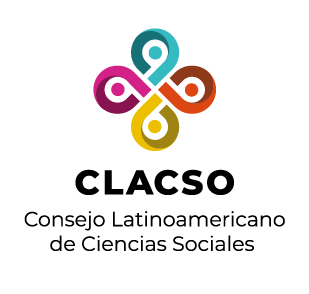Red de Bibliotecas Virtuales de Ciencias Sociales en
América Latina y el Caribe

Por favor, use este identificador para citar o enlazar este ítem:
https://biblioteca-repositorio.clacso.edu.ar/handle/CLACSO/63757Registro completo de metadatos
| Campo DC | Valor | Lengua/Idioma |
|---|---|---|
| dc.creator | Ribeiro, Ana Cláudia Romano | - |
| dc.creator | Oliveira, Gabriela Rodrigues de | - |
| dc.date | 2021-09-09 | - |
| dc.date.accessioned | 2022-03-18T18:38:31Z | - |
| dc.date.available | 2022-03-18T18:38:31Z | - |
| dc.identifier | https://periodicos.fclar.unesp.br/lettres/article/view/15086 | - |
| dc.identifier.uri | http://biblioteca-repositorio.clacso.edu.ar/handle/CLACSO/63757 | - |
| dc.description | This article aims to analyze the relationship between the French language and the language of African origin, Wolof, present in the novel Douceurs du bercail (1998), by the Senegalese writer Aminata Sow Fall. In order to do so, first, we will discuss some implications of the concept of francophone literature, of which Fall’s novel is part (COMBE, 2010; MOURA, 2019). Then, we will present an overview of the plurilingual linguistic situation in Senegal, showing the coexistence of different languages in Senegalese society (CISSE, 2005). Finally, we will present Fall’s work within this linguistic context. With the analysis, we seek to understand how the words in Wolof are important for the construction and deeper understanding of the work, and how they carry the social universe of the author (BOCANDE, 20005; CALÍ, 2017; COMBE, 2010; DIA, 2016; FEUTREL, 2019). | en-US |
| dc.description | Este artigo tem por objetivo analisar a relação entre a língua francesa e a língua de origem africana, o wolof, presentes no romance Douceurs du bercail (1998), da escritora senegalesa Aminata Sow Fall. Para isso, primeiramente, iremos discutir algumas implicações do conceito de literatura francófona, da qual faz parte o romance de Fall (COMBE, 2010; MOURA, 2019). Em seguida, apresentaremos um panorama da situação plurilinguística do Senegal, evidenciando a coexistência de variadas línguas na sociedade senegalesa (CISSE, 2005). Por fim, apresentaremos a obra de Fall dentro desse contexto linguístico. Buscamos, com a análise, compreender como as palavras em wolof são importantes para a construção e compreensão mais profunda da obra, e como elas carregam o universo social da autora (BOCANDE, 2005; CALÍ, 2017; COMBE, 2010; DIA, 2016; FEUTREL, 2019). | pt-BR |
| dc.format | application/pdf | - |
| dc.language | por | - |
| dc.publisher | Lettres Françaises | pt-BR |
| dc.relation | https://periodicos.fclar.unesp.br/lettres/article/view/15086/11292 | - |
| dc.source | Lettres Françaises; n.22 (1), 2021 | pt-BR |
| dc.source | 2526-2955 | - |
| dc.source | 1414-025X | - |
| dc.subject | Douceurs du bercail | en-US |
| dc.subject | Aminata Sow Fall | en-US |
| dc.subject | Senegalese literature | en-US |
| dc.subject | Francophone literature | en-US |
| dc.subject | Wolof | en-US |
| dc.subject | Douceurs du bercail | pt-BR |
| dc.subject | Aminata Sow Fall | pt-BR |
| dc.subject | Literatura senegalesa | pt-BR |
| dc.subject | Literatura francófona | pt-BR |
| dc.subject | Wolof | pt-BR |
| dc.title | Aminata Sow Fall: the relationship between maternal language and the language of literary expression in her novel Douceurs du bercail (1998) | en-US |
| dc.title | Aminata Sow Fall: relação entre língua materna e língua de expressão literária em seu romance Douceurs du bercail (1998) | pt-BR |
| dc.type | info:eu-repo/semantics/article | - |
| dc.type | info:eu-repo/semantics/publishedVersion | - |
| Aparece en las colecciones: | Faculdade de Ciências e Letras-Unesp - FCL/CAr - Cosecha | |
Ficheros en este ítem:
No hay ficheros asociados a este ítem.
Los ítems de DSpace están protegidos por copyright, con todos los derechos reservados, a menos que se indique lo contrario.